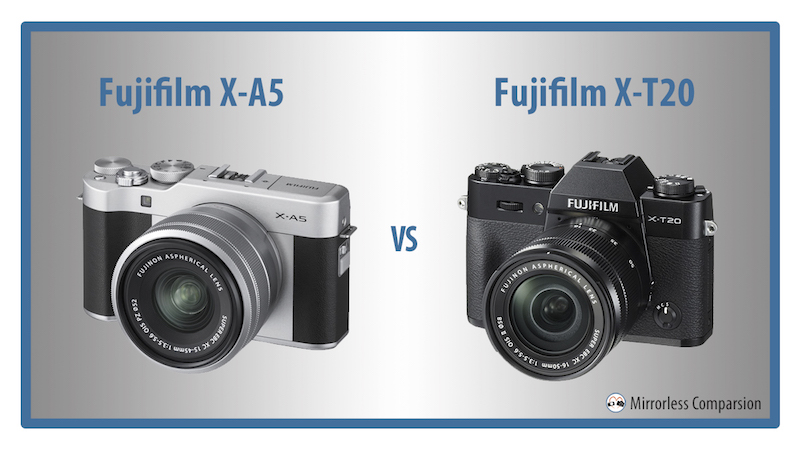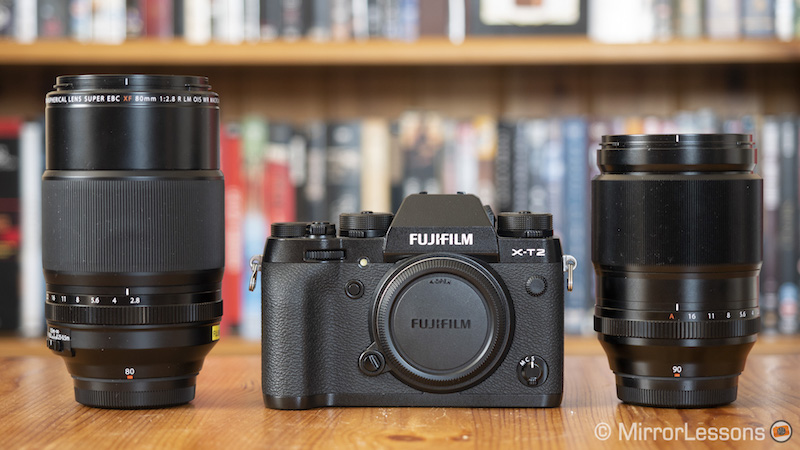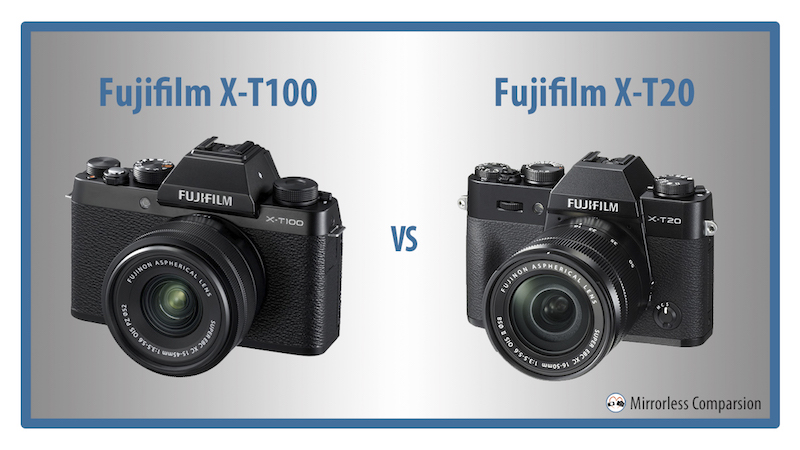Whilst attending a Fujifilm event a few months ago, I recall having a long conversation with one of the managers about the Fujifilm X70 who asserted at the time that a direct successor wasn’t in the cards for the time being. I admit I was somewhat disappointed as I really enjoyed the camera’s 28mm equivalent field of view while testing it a couple of years ago.
Author's Bio and Articles
Heather Broster
Heather Broster co-founded Mirrorless Comparison and has produced several reviews and comparisons for the website as well as our YouTube channel. A passionate photographer since her 14th birthday, she loves macro, butterflies, instant cameras and taking pictures of people at events.
Fujifilm X-A5 vs X-T20 – The 10 Main Differences
At the top of the entry level range of Fujifilm cameras is the X-A5. It is characterised by its flat-topped design and Bayer sensor and is the camera beginners are most likely to go for thanks to its reasonable price tag.
Sitting one step above is the X-T20, a mid-range model with a few more bells and whistles than the X-A5 but an equally compact body and attractive design. However, unlike the X-A5, it comes with a built-in viewfinder and an X-Trans III sensor.
Sony FE 35mm f/2.8 ZA vs Samyang Rokinon 35mm f/2.8 AF – The complete comparison
The Sony FE 35mm f/2.8 was the very first native lens for Sony’s full-frame E-mount system along with the FE 55m f/1.8,. When used on full-frame bodies, it offers a moderate wide-angle whereas on APS-C bodies such as the a6300 or a6500, it becomes a standard lens with a 52.5mm equivalent field of view.
It was the only 35mm f/2.8 autofocus prime for the system until Samyang Rokinon released its own take on the lens in 2017: the AF 35mm f/2.8 FE.
Because the Sony version is approximately $500 more expensive than its more recent counterpart, we were curious to investigate how they compare in terms of overall performance and answer the all-important question: which should Sony FE users choose for their full-frame camera? After throughly testing both lenses side-by-side, we have all the answers here!
Fujifilm XF 80mm f/2.8 vs 90mm f/2 – The complete comparison
If you are a photographer whose affection is torn between portraits and macro, I can bet you’ve asked yourself at some point: does it make more sense to use a single macro lens for both portraits and macro work, or invest in a dedicated portrait lens?
Fujifilm X-T100 vs X-T20 – The 10 Main Differences
Though many regard the X-Pro1 as the quintessential X Series camera, the model that truly catapulted Fujifilm to success on the consumer market was the X-T1. Not only was it the first X Series camera to seriously target advanced users, but it also gave birth to the much-loved X-T line-up which now consists of five models that target different types of users.





